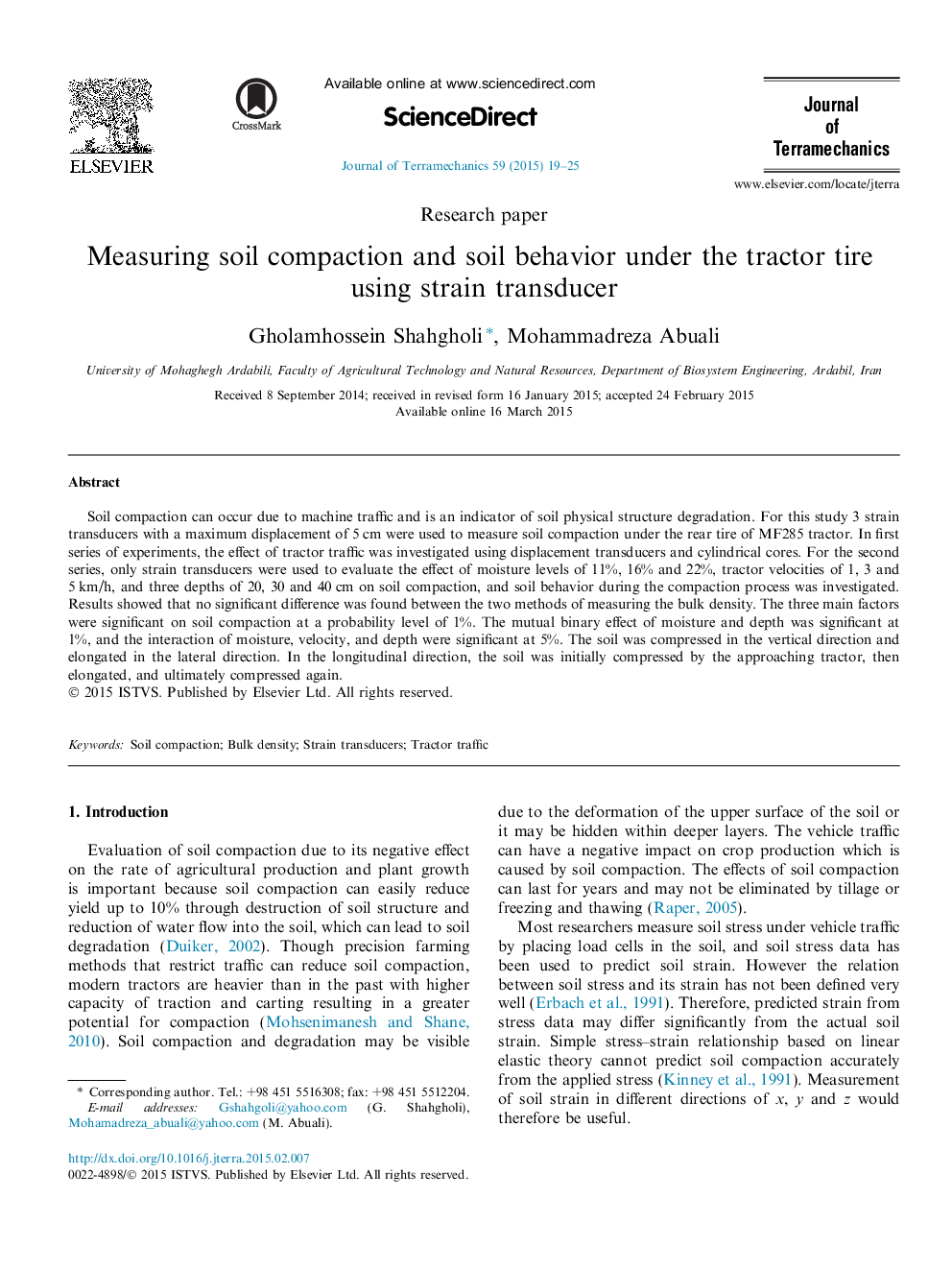| Article ID | Journal | Published Year | Pages | File Type |
|---|---|---|---|---|
| 796617 | Journal of Terramechanics | 2015 | 7 Pages |
•Measuring soil density using cylindrical cores and strain transducers showed no significant difference.•Maximum soil displacements of 23, 17 and 14 mm occurred, at speeds of 1, 3 and 5 km/h, respectively.•Soil compacted vertically during tractor tire pass and expanded laterally.•In longitudinal direction, first it was compacted and later expanded and at last it was compacted again.•The ultimate magnitude of the lateral and longitudinal strain were 26% and 12% of vertical strain, respectively.
Soil compaction can occur due to machine traffic and is an indicator of soil physical structure degradation. For this study 3 strain transducers with a maximum displacement of 5 cm were used to measure soil compaction under the rear tire of MF285 tractor. In first series of experiments, the effect of tractor traffic was investigated using displacement transducers and cylindrical cores. For the second series, only strain transducers were used to evaluate the effect of moisture levels of 11%, 16% and 22%, tractor velocities of 1, 3 and 5 km/h, and three depths of 20, 30 and 40 cm on soil compaction, and soil behavior during the compaction process was investigated. Results showed that no significant difference was found between the two methods of measuring the bulk density. The three main factors were significant on soil compaction at a probability level of 1%. The mutual binary effect of moisture and depth was significant at 1%, and the interaction of moisture, velocity, and depth were significant at 5%. The soil was compressed in the vertical direction and elongated in the lateral direction. In the longitudinal direction, the soil was initially compressed by the approaching tractor, then elongated, and ultimately compressed again.
